
Official Edgar Rice Burroughs Tribute and Weekly Webzine Site Since 1996 ~ Over 15,000 Webpages in Archive Volume 7163a 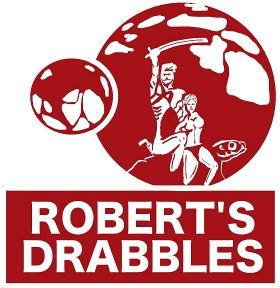 |
ERB 100-Word Drabbles
JANUARY IIIa Edition :: Days 16-31
Back to Days 1-15 at ERBzine 7163
by Robert Allen Lupton
With Collations, Web Page Layout and ERBzine Illustrations and References by Bill Hillman
POT BOILER
January 16: On this day in 1940, Edgar Rice Burroughs began writing “Tarzan and the Madman.” The novel was never published in magazine format and the first edition didn’t see print for 24 years - until its Canaveral Press publication on June 9, 1964. Canaveral reprinted the book in 1974. It was also published as a Ballantine paperback in twelve versions, with Robert Abbott and Boris Vallejo covers. More information on the book at https://www.erbzine.com/mag7/0731.html
The story was rejected by every magazine it was submitted to in the 1940s, including the Munsey pulps, Blue Book, Ziff-Davis, Standard Magazines and Street and Smith publications. The Argosy editor complained that Tarzan didn’t seem to be Tarzan anymore.
The drabble for today is “Pot Boiler,” and it’s inspired by the novel, “Tarzan and the Madman,” by Edgar Rice Burroughs.
POT BOILER
![]()
The king patted the cooking pot. “Nice lady will taste good.”
Sandra said, “My father will pay to save me. All the gold and jewels you desire.”
The king jingled his golden necklaces. Every tribal member, even the children, wore diamonds and rubies. “Gold has no value where it can’t buy food. The promise of gold is worth even less. We’re hungry and the pot’s boiling. You look like goulash to me. Probably enough leftovers for meat pies tomorrow.”
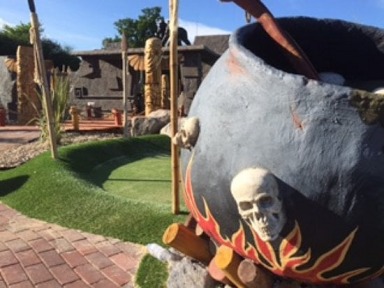
PROPRIETY IN ALL THINGS
January 17: On this day in 1931, Argosy publishes the first part of four parts of “Caves of the Ocean” by Ralph Milne Farley, the author of the “The Radio Man,” “The Radio Beasts,” and “The Radio Planet.”
Farley was the pen name for Roger Sherman Hoar, a former state senator, assistant attorney general for the state of Massachusetts, and a descendent of Robert Sherman, who signed the US Declaration of Independence, Hoar wrote legal tomes under his own name, but sword and planet novels in the Burroughs tradition using the name, Ralph Milne Farley. He served in the United States Army Coast Guard Artillery Corps during WW1 and taught at Harvard, Marquette University, and the Coast Artillery School.
The Radio Man was adapted for a 1950 Avon comic book titled “An Earth Man on Venus.” Avon also published the story as a paperback book that same year.
During the Burroughs boom in the 1960s, Ace books published three of Farley’s “Radio Man.” Books. Several of his novels are available as “on demand” publications, but “Caves of the Ocean” has never been printed except in the four issues of Argosy.
Myles Cabot, aka the Radio Man finds himself on Venus, a planet of humans and giant insects. All the creatures of the planet communicate by radio waves and Cabot just happens to have a headset. Like the song by Ray Stevens says, “Turn Your Radio On.”
ERBzine has a number of pages with information about the “Radio Man” and Ralph Milne Farley. Here’s a good place to start: https://www.erbzine.com/mag15/1514.html
The drabble for today is “Propriety In All Things.”
PROPRIETY IN ALL THINGS
![]()
“How did you find out?”
“I’m ashamed, but I read that sort of thing, I recognize
your style. You’ll have to stop or resign.”
“Indeed, I’ve an offer from Milwaukee. I’ll accept
it. Wisconsin folks are more understanding.”
“What would your great-grandfather, Roger Sherman,
think?
“He’s dead and he doesn’t care, but he signed the
Declaration of Independence for exactly this reason. Besides, he’d know
Milwaukee makes good beer. Cheers.”
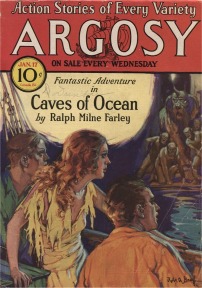
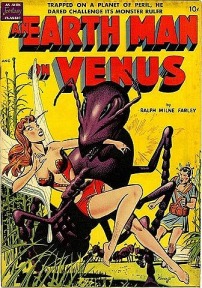
CURRENT EVENTS
January 18: On this day in 1954, artist John Celardo’s first Tarzan daily comic strip was published. Celardo had been inking the strip for the previous artist, Bob Lubbers for quite a while and at first the artwork was similar to Lubber’s work. Celardo stayed with the Tarzan strip for 15 years incorporating current events into the storyline as he went. At its peak, Celardo’s Tarzan strips were published in 225 newspapers in 12 countries.
Celardo rose to the rank of Captain during WW2, where he served in the US Army in Europe. A salute to a fine artist.
The page with this article is from Celardo’s first year, it is not his first page. I included it herein because I like the composition.
The drabble for today is “Current Events.” With 225 papers publishing Tarzan every day, Celardo’s Tarzan couldn’t possibly deal with current events in ways to make 225 different editors happy.
CURRENT EVENTS
![]()
“I enjoyed “Jungle Girl, Queen of the Gorillas.” I’m impressed with the way you’ve kept Tarzan fresh and current.”
“Russ, I couldn’t keep Tarzan mired in the last century. Readers need to identify with the characters.”
“Where do you get the news you use in the strip?”
“The front page. Like Will Rogers said, “All I know is what I read in the papers.”
“Do your stories mirror the paper’s version of current events?”
“Hell, no. Tarzan is his own man.”

THERE'S A PILL FOR THAT
January 19: On this day in 1935, Edgar Rice Burroughs finished writing his 19th Tarzan novel. He selected the date to complete the story deliberately – finishing the 19thbook on the nineteenth day of the year.
The manuscript was rejected by Collier’s and Liberty magazines, before being accepted by Blue Book magazine and published in six monthly installments, from October 1935 to December 1936.
“Tarzan’s Quest,” had the working title, “Tarzan and Jane,” and the first Blue Book installment cover was by Herbert Morton Stoops. ERB, Inc. published the first edition on September 1, 1936. The print run was 5000 copies and the wraparound dust jacket and interior illustrations were by J. Allen St. John.
Jane and Tarzan are captured by the Kavuru tribe. The King and High Priest manufacture a pill of immortality from a disgusting selection of ingredients. Tarzan overcomes the Kavuru and escapes with a huge supply of the pills. He shares them with Jane, Korak, Meriem, and Nkima, his monkey companion. Nkima gets a share because he is quote, “a lot more useful than some people.” More about the book in ERBzine at: https://www.erbzine.com/mag7/0727.html
The drabble for today is “There’s A Pill For That.”
THERE'S A PILL FOR THAT
![]()
Tarzan replied, “Think about it. What good is immortality without intelligence? I know how to make smart pills. I’ll trade them for your pills.”
Kavandavanda agreed. “I’ll hold Jane hostage while
you fetch the ingredients”.
Tarzan returned and gave Kavandavanda a small brown
pellet.
“Here. Chew it well before you swallow.”
“The priest swallowed. He grimaced. “If I didn’t know
this was a smart pill, I’d swear it tasted like Bunyoro Rabbit droppings.”
Tarzan smiled. “See. You’re smarter already.”
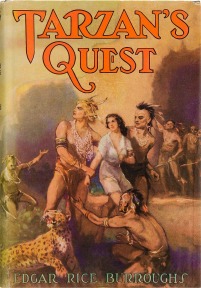
KEEP YOUR HEAD DOWN
January 20: On this day in 1967, the 19th episode, “ Cap’n Jai”, of the Ron Ely Tarzan television show was broadcast. January 20 was also a sad day in Edgar Rice Burroughs history, on this day in 1984, Johnny Weissmuller died. I posted about Johnny on this day last year and while Johnny’s passing is noted and mourned, it isn’t the focus of this article.
"Cap’n Jai” starred the usual cast of characters and featured the Australian actor, Chips Rafferty, in a guest role as Dutch, one of a trio of greedy sailors who dupe Jai in an effort to locate a cache of stolen diamonds – an all too common theme on this television show.
John William Pilbean Goffage aka Chips Rafferty, was an Australian actor. Called "the living symbol of the typical Australian.” Rafferty's performed regularly in Australian feature films as well as appearing in British and American productions, including “The Sundowners.” Rafferty worked as an opal miner, sheep shearer, drover, and pearl diver before enlisting in the Australian Air Force in WW2, where he achieved the rank of “Flying Officer." He appeared in episodes of “The Girl From U.N.C.L.E.,” “The Big Valley,” “The Monkees,” and several other television series in America, England, and Australia. His movie career included “Mutiny on the Bounty” and the Elvis Presley film, “Double Trouble.”
The drabble for today, inspired by the works of Edgar Rice Burroughs, and for today, “Chips Rafferty, is "Keep Your Head Down.”
KEEP YOUR HEAD DOWN
![]()
“I like me spuds well enough, but I was given the nickname as a child. I worked as a cattle drover and I was an inattentive daydream believer and was always stepping in a pile of fresh cow chips.”
“So it doesn’t mean a chip off the old block?”
“No, I remember it like it was yesterday. The boss
said, “Watch where you put your feet. Remember boy, the chips are down.”
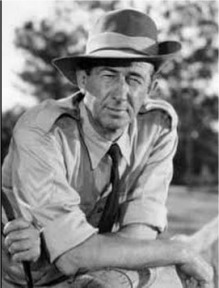
STURGEON'S LAW
January 21: On this date in 1942, Edgar Rice Burroughs’s “Laugh It Off” column in the Honolulu Star Bulletin bemoaned the ban on alcohol and the government’s “Give a pedestrian a ride” program. (He counted 32 cars that drove by without offering him a ride.)
During his time in Hawaii, Burroughs wrote several columns to keep up moral and encourage preparedness for a second Japanese attack on the island. The column for January 21, 1942, while humorous in nature, makes several important points. My wife calls it “Kidding on the Square,” and it means to make something sound funny or amusing when you’re actually deadly serious about it. ERB was a master.
The complete January 21, 1942 column and several more are available to read at:
STURGEON'S LAW
![]()
The overwhelming number of people bleating for relaxation of the liquor ban may be one of the best arguments in favor of the ban; for, according to a noted avant, the majority is always wrong and must always be wrong. His strongest argument is based on the more or less well established fact that 90 per cent of us are morons.”
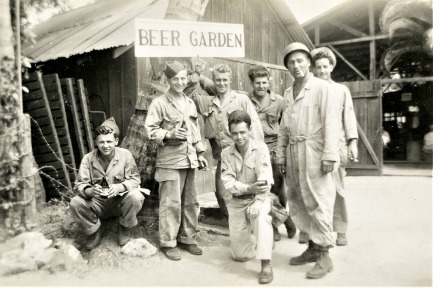
MAKE ME HEAR YOUR FEAR
January 22: On this day in 1969, Olivia d’Abo, an English-American actress, singer , and songwriter who voiced Jane in Disney’s “The Legend of Tarzan” and the direct to video “Tarzan and Jane” was born in London, England. She is best known for her role on ABC’s “The Wonder Years.”
Her father, Mike d’Abo was a member of the 1960s musical group, Manfred Mann. Olivia and her cousin, Maryam d’Abo (Kara Milovy in the James Bond film “The Living Daylights”) owned a house together when Olivia was only 19.
She played Princess Jehnna in “Conan the Destroyer, Nicole Wallace on “Law and Order: Criminal Intent,” and appeared on one episode of “Star Trek: The Next Generation.”
She voiced Jane Porter on 39 episodes of “The Legend of Tarzan” and the direct to video film “Tarzan and Jane,” compiled from unreleased episodes of “The Legend of Tarzan.” She’s voiced numerous characters on numerous animated features including “Luminara Unduli” on “Star Wars: The Clone Wars” and “Star Wars: The Rise of Skywalker.”
For details about the animated Disney “The Legend of Tarzan:
MAKE ME HEAR YOUR FEAR
![]()
“Confidence and fear? Yesterday, you wanted joy and
anger conveyed in three words.
“Yes, it’s not what you say, it’s how you say it.
Introspection is important.”
“Yes, Steve, but I’m sure introspection doesn’t mean
the same thing as inflection,” said Olivia haughtily, but softly.
“Perfect. Exactly like that. And I stand corrected.”


FIRE WHEN READY
January 23: On this day in 1994, the Gray Morrow / Don Kraar Tarzan Sunday Comic story, “Deadly Gambit,” began and ran for 12 Sundays. Tarzan is in Myanmar, formerly named Burma, to ransom a friend from the “heroin king.” Tarzan, clad only in what appear to be cutoff blue jeans, paid the ransom and left with his friend, Philander. The heroin king, General Ne Hnang, sent his men after the pair, intending to kill them and keep the ransom. Ne Hnang finally sent and armed jet fighter after Tarzan and Philander. Tarzan shot the jet down with a bow and arrow and the two men escaped Myanmar. Pretty good shooting.
The entire story is available, along with all the other Gray Morrow illustrated Sunday Tarzan comics. https://www.erbzine.com/mag35/3548.html is a good place to start. Gray Morrow drew the Tarzan Sunday Comic from March 6, 1983 through July 8, 2001 – almost 19 years and little over 950 weeks.
The drabble for today, “Fire When Ready,” is based on the Sunday Comic and inspired by the writings of Edgar Rice Burroughs.
FIRE WHEN READY
![]()
Philander hid to avoid the bullets from the jet’s guns. Tarzan stood firm, waiting for the jet to come closer. Bullets churned the soil underfoot, but the pilot missed with every shot.
Tarzan never flinched. Finally, he fired. Seconds later
the jet exploded.
“You took down a jet armed with machine guns with
an arrow.”
Tarzan smiled. “The weapon doesn’t matter if the man
can’t shoot straight.”
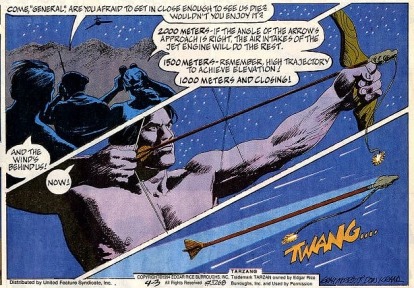
QUIS CUSTODIET IPSOS CUSTODES
January 24: On this day in 1940, an article, “Shooting Citizens,” by an indignant and angry Edgar Rice Burroughs was published in the Los Angeles Times. In the article, Burroughs references three shootings of unarmed men by the local police or sheriff’s forces in the past year. He mentions that his own son was accosted and man-handled by the Los Angeles Police Department and accused of being the “Phantom Burglar” of Bel-Air.
I make no comments concerning Burroughs’s position about the situation. I merely present it for historical evaluation. Make your own judgements. His frustration and anger are clear by his words. The entire article is available at:
Today’s drabble was written by Edgar Rice Burroughs and is taken from that article. Let’s call it “Quis custodiet ipsos custodes?”
QUIS CUSTODIET IPSOS CUSTODES
![]()
Had he run he would have been shot.
I wrote the Chief of Police, but never got any satisfaction.
An officer complained of the tone of my letter to the Chief.
It’s bad enough to have to be in constant terror of holdup men and kidnapers without having the Police Department shooting at us every time we go out at night.
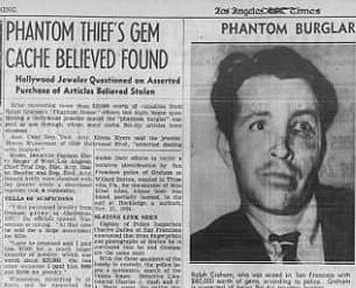
WEDDING PLANS
January 25: On this date in 1935, Edgar Rice Burroughs inscribed a presentation copy of “Lost on Venus” to his future wife, Florence Gilbert Dearholt, on the front free endpaper of the copy, "To Florence, with love, Ed, Tarzana, January 25, 1935." Less than 90 days later, ERB and Florence Gilbert Dearholt eloped to Las Vegas on April 14th, 1935. Florence later inscribed the book to her brother Ed Gilbert, "For Eddie, also with love - always, Florence Gilbert Burroughs," beneath ERB's inscription. Florence’s book plate is on the free endpaper with the signatures.
For details about Florence Gilbert Burroughs, I suggest:
The drabble for today is “Wedding Plans” and it was inspired by Edgar Rice Burroughs and the novel, “Lost on Venus.”
WEDDING PLANS
![]()
“They remain in constant danger through the entire
book.”
“It was so exciting. A woman likes a little excitement.”
“Perhaps, like Carson and Duare, we should have our
own adventures. We could elope to somewhere really dangerous, like Las
Vegas in the springtime.”
“Sounds wonderful, so long as what happens in Vegas doesn’t stay in Vegas.”
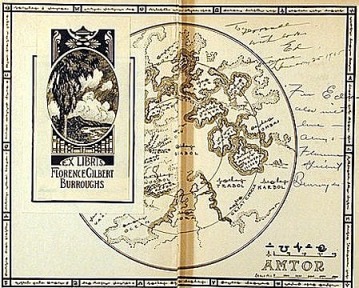
SOUL SURVIVOR
January 26: On this day in 1921, Methuen published the first edition of “The Man Without A Soul,” a novel originally published in All-Story Weekly as “The Return of the Mucker” by Edgar Rice Burroughs. The complete novel, “The Mucker,” was written and published in two parts by All Story. The first part, “The Mucker,” was published by All-Story Cavalier Weekly in 1914, and the sequel, “The Return of the Mucker,” by All-Story Weekly in 1916.
To make this a little more potentially confusing, Burroughs’ novel, “The Monster Men,” was originally published by All-Story Magazine in 1913 under the name, “The Man Without A Soul.”
For publishing details and several covers, visit: https://www.erbzine.com/mag7/0757.html
Why was the book retitled in the UK? When Burroughs wrote the book, in American slang a Mucker was a person who cleaned up things, especially stables. It was also used to mean a uncultured and generally poorly behaved person. In the UK, a mucker was an informal term for a friend. In the UK armed services it meant a comrade, another low-ranking soldier just like the person using the term.
The drabble for today is “Soul Survivor,” and it’s based on the title change for “The Return of the Mucker’ used by Methuen Publishing Ltd in 1921.
SOUL SURVIVOR
![]()
“My decision. The cover cowboy is quite handsome, not pretty. The original title is potentially confusing. An American mucker is a lout or a stable hand. Here a mucker is a friend, an army buddy.”
“No, you misunderstand. The cowboy isn’t alone, he’s
not the sole person in the story.”
‘Lucas, soul doesn’t mean what you think it means.”
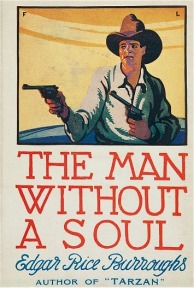
PHOTOGENIC
January 27: On this day in 1991, the story, “Bigfoot,” began in the Tarzan Sunday Comics. Gray Morrow did the artwork and Don Kraar wrote the story. It ran for twelve weeks.
In the story, Professor Samuel T. Philander is trying to stop illegal logging in the northwestern forests of the United States. The lumberjacks are ruthless, but Philander recruits Tarzan to help him, along with some other unexpected assistance. Seems the Sasquatch speak Mangani and they help Tarzan fight for the forest. The creatures call them themselves, Omangani or “Tall Great Apes.”
The drabble for today, “Photogenic,” is based on that storyline.
PHOTOGENIC
![]()
The Sasquatch replied in Tarzan’s language and identified
itself as an Omangani, a tall great ape.
Shocked at their shared language, the two nevertheless
decided to defend the forest together. The Omangani said, “We’ll fight
to stop the lumberjacks. But no photographs.”
Tarzan said, “Photographs aren’t magic. They won’t
steal your soul.”
“Of course not. But after a battle with the loggers,
I won’t be ready for my close-up.”
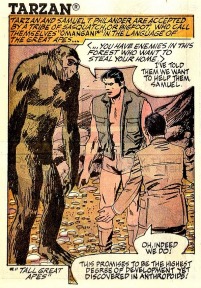
VITAL ORGANS
January 28: On this day in 1939, Argosy Weekly published the fourth part of the six part serialization of “Synthetic Men of Mars,” the ninth book in the Barsoom series.
The Argosy issue had a hockey illustration on the cover by G. J. Rozen for the short story, “Skate, You Sinners,” by Judson P. Philips. Part three of the Cornell Woolrich novelette, “The Eye of Doom” also known as “The Devil With A Sparkling Face” also appears.
Synthetic Men has several things to recommend it: John Carter, a maiden in peril, artificial men (homads), giant flying birds (malagors), and Barsoom’s greatest scientist, Ras Thavas. A significant part of the story takes place in the Toonolian Marshes. I love the name, Toonolian Marshes. It reminds me of the English moors – only the Hound of the Baskervilles wouldn’t survive a day in those marshes prowled by banths and littered with calot trees.
The drabble for today is “Vital Organs.” It’s based on the hormads created by Edgar Rice Burroughs and the novel, “Synthetic Men of Mars.”
VITAL ORGANS
![]()
Vor Daj released his flyer’s controls and turned the
creature’s face forward. “You’re just a head. How is it you can talk?”
“Men like me were cooked up by Ras Thavas in a large
vat. Each part of us will live forever unless burned.”
“A man can’t speak without a body, without lungs.”
“Most men don’t need brains to talk. Why would I need
lungs?”
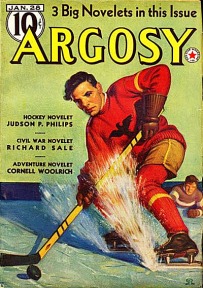
WATER, WATER, EVERYWHERE
January 29: On this day in 1942, the world’s oldest war correspondent, Edgar Rice Burroughs was staying in the Noumea Hotel on the island of New Caledonia in the Pacific. The water was shut off when he returned to hotel on the 29th and he washed with a pitcher and washbowl and discovered what he was sure were several spider bites. Burroughs blamed the bites for his lack of “pep” for several years.
That evening, Captain Bowen offered ERB a rare commodity, a cold beer. The two of them and Colonel Leroy E. Nelson, drank four bottles each. Burroughs thought it was great, he’d been drinking unchlorinated tap water, because he’d believed that it was chlorinated. He was thankful to not have have dysentery. That night someone stole ERB’s assigned jeep, the “Bouncing Betty.”
.For his complete summary of January 29 and other days on New Caledonia, visit:
WATER, WATER, EVERYWHERE
![]()
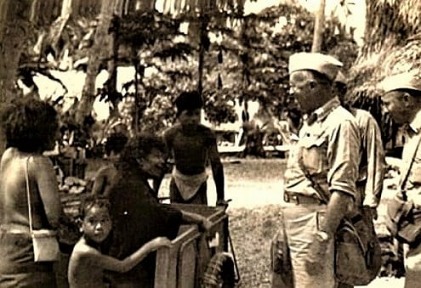
GOLDILOCKS ZONE
January 30: On this day in 1945, the copyright was issued for the Big Little Book “Tarzan and the Ant Men.” Appropriate title for a Big Little Book. The cover to Whitman Big Little Book #1444 was drawn by John Coleman Burroughs and the interior included 171 illustrations by Rex Maxon, taken from his Tarzan daily comic strip, which ran for 126 days from January 25, 1932 through June 18, 1932. R.W. Palmer wrote the daily strip.
See the covers and information about all of the Edgar Rice Burroughs’ Big Little Books:
GOLDILOCKS ZONE
![]()
King Elkomoelhago said, “Look to yourself, Tarzan.
Easier to make one man small than many men big.”
“I need to regain my normal size.”
“In time the potion will wear off. We’ve spent
years perfecting it. At first, it made men too small and then, the men
who drank the potion stayed too big.”
Princess Janzara, who was in love with Tarzan, batted her eyes and said, “But this one is just right.”
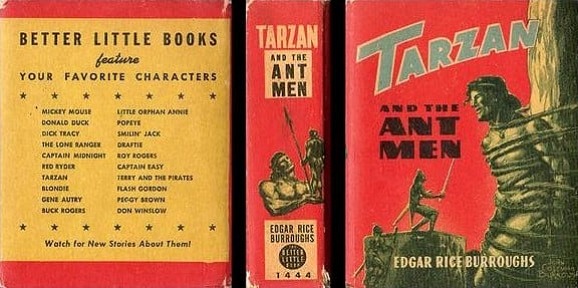
WATCH YOUR STEP
January 31: On this day in 1970, actress Amelia Fiona Jessica Minnie Driver, who voiced Jane in the Disney animated film, Tarzan, was born in London, England.
Driver received an Academy Award nomination for Best Supporting Actress in the film “Good Will Hunting,” and was nominated for an Emmy and a Golden Globe for her role in the cult classic “The Riches” released on FX.
In addition to her acting career, Driver is a recording artist and has three full solo albums to her credit. Besides, playing Jane, she has voiced a variety of animated series and films including “SuperMansion,”
Ken Duncan served as the supervising animator for Jane. Many of Driver's mannerisms and characteristics were incorporated into Jane's animation. The scene where Jane describes meeting Tarzan for the first time to her father and Clayton was improvised by Driver, resulting in Ken Duncan animating one of the longest animated scenes on record. Reportedly, the scene took 7 weeks to animate and 73 feet of film.
The drabble for today is “Watch Your Step,” and it’s based on Tarzan and Jane, created by Edgar Rice Burroughs.
WATCH YOUR STEP
![]()
Tarzan replied, “The jungle isn’t as you wish it to
be, it is as it is, and not as we would like.”
“It’s so beautiful.”
“Don’t be deceived. Wants and wishes won’t change
what it is. Beauty and danger often go hand in hand.”
Jane looked around fearfully. “So what should I do?”
“Accept and enjoy what you see, but always look before
you leap.”
Jane nodded. “That’s good advice no matter where you
are.”

![]()
See
Days 1-15 at ERBzine 7163
![]()
JANUARY III ILLUSTRATIONS COLLAGE
![]()
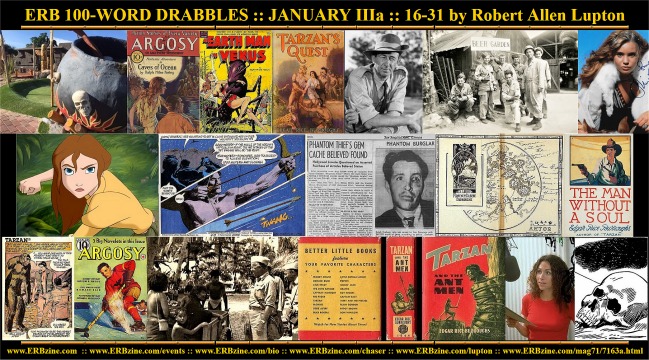
Click for full-size promo collage

